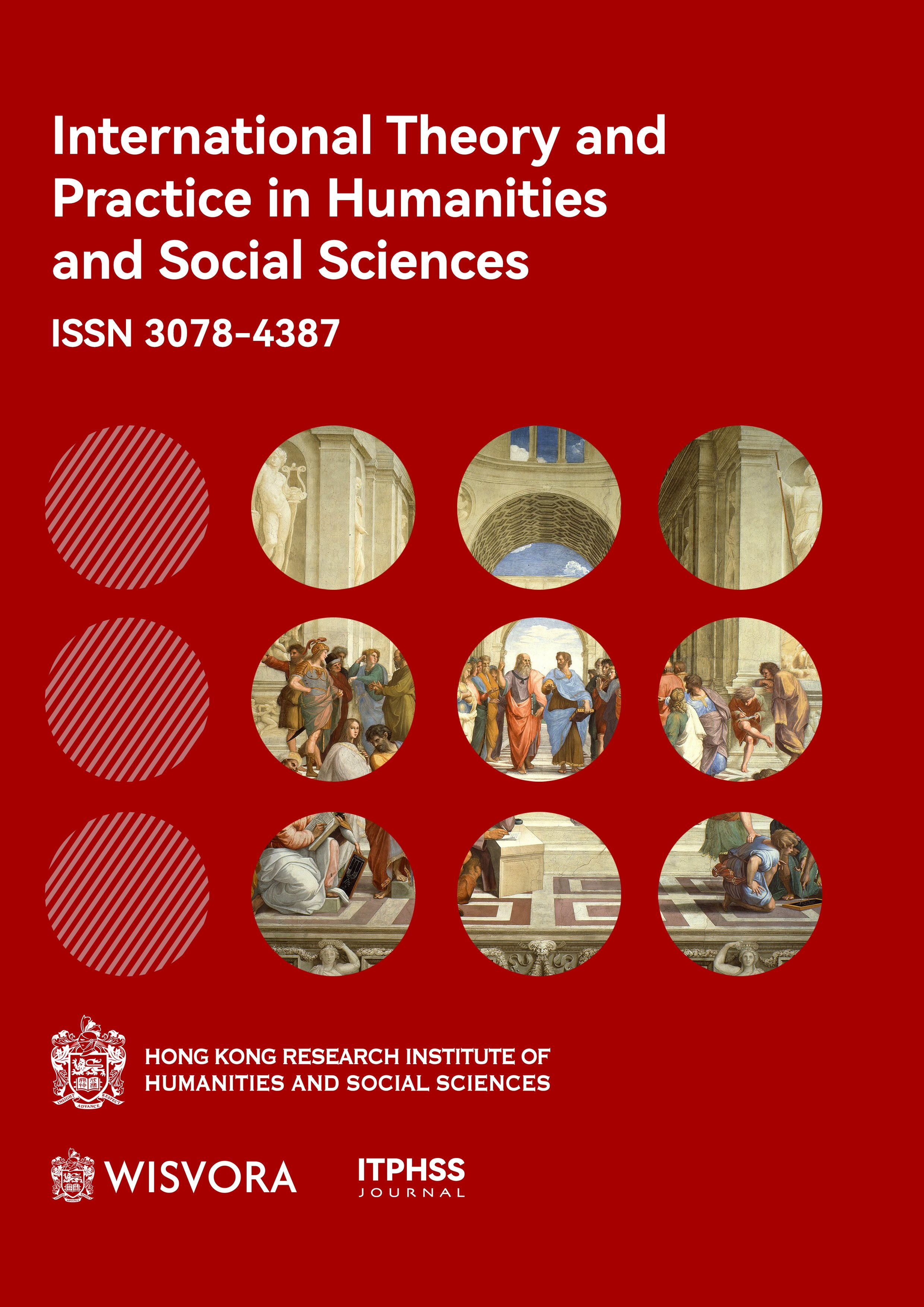Abstract
Central banks across major economies are actively engaging in research, pilot programs, and the implementation of central bank digital currencies (CBDCs). Despite these efforts, consumer interest in digital currencies such as ECNY (Digital Yuan) issued by the People’s Bank of China remains relatively low within the personal consumption market. To address this, the study examines key factors shaping residents’ willingness to adopt ECNY.The research introduces a conceptual framework incorporating Policy Driving, Service Quality, Trust, Satisfaction, Perceived Usefulness, and Use Intention as critical variables. By applying theories of planned behavior and technology acceptance, it delves into how these elements influence the intention to use ECNY. Findings indicate that all the identified factors, including Policy Driving, Service Quality, Trust, Satisfaction, and Perceived Usefulness, significantly impact users' willingness to adopt ECNY. Among these, Policy Driving emerged as the most influential determinant.
Additionally, the analysis highlights interrelations among Service Quality, Satisfaction, Trust, and Perceived Usefulness, demonstrating their interconnected roles in shaping user adoption behavior. These insights contribute substantial theoretical value by illuminating the dynamics underlying ECNY adoption, offering actionable strategies for enhancing its implementation. Furthermore, this study extends its relevance by providing practical recommendations for accelerating the adoption of CBDCs globally, underscoring their potential for advancing digital financial ecosystems worldwide.
References
BIS. (2021, May 6). Gaining momentum-Results of the 2021 BIS Survey on Central Bank Digital Currencies [R/OL]. Retrieved May 14, 2022, from https://www.bis.org/publ/bppdf/bispap125.htm
Auer, R., Frost, J., Gambacorta, L., et al. (2022). Central bank digital currencies: Motives, economic implications, and the research frontier. Annual Review of Economics, 14, 697-721.
Duffie, D. (2021). Building a stronger financial system: Opportunities for a digital dollar. Central Bank Digital Currency Considerations, Projects, Outlook.
Tao, L. (2022). Opportunities, challenges and policy suggestions for the development of digital RMB. Enterprise Economics, 41(02), 5-16.
Ozturkcan, S., Senel, K., & Ozdinc, M. (2022). Framing the Central Bank digital currency (CBDC) revolution. Technology Analysis & Strategic Management, 1-18.
Tronnier, F., Harborth, D., & Hamm, P. (2022). Investigating privacy concerns and trust in the digital Euro in Germany. Electronic Commerce Research and Applications, 53, 101158.
Ma, C., Jin, Z., Mei, Z., et al. (2022). Internet of things background: An empirical study on the payment intention of central bank digital currency design. Mobile Information Systems, 2022.
Huangfu, Q. (2013). A review of domestic and foreign research on information systems continuance-based on literature research of electronic service and other related fields. Journal of Information, 32(10), 111-116.
Bhattacherjee, A. (2001). Understanding information systems continuance: An expectation-confirmation model. MIS Quarterly, 25(3), 351-370.
Ajzen, I. (1991). The theory of planned behavior. Organizational Behavior and Human Decision Processes, 50(2), 179-211.
Davis, F. D. (1989). Perceived usefulness, perceived ease of use, and user acceptance of information technology. MIS Quarterly, 319-340.
Mathieson, K. (1991). Predicting user intentions: Comparing the technology acceptance model with the theory of planned behavior. Information Systems Research, 2(3), 173-191.
Tao, L. (2022). Opportunities, challenges and policy suggestions for the development of digital RMB. Enterprise Economics, 41(02), 5-16.
Martin, J., Mortimer, G., & Andrews, L. (2015). Re-examining online customer experience to include purchase frequency and perceived risk. Journal of Retailing and Consumer Services, 25, 81-95.
Parasuraman, A., Zeithaml, V. A., & Malhotra, A. (2005). ES-QUAL: A multiple-item scale for assessing electronic service quality. Journal of Service Research, 7(3), 213-233.
DeLone, W. H., & McLean, E. R. (2004). Measuring e-commerce success: Applying the DeLone & McLean information systems success model. International Journal of Electronic Commerce, 9(1), 31-47.
Kuo, Y. F., Wu, C. M., & Deng, W. J. (2009). The relationships among service quality, perceived value, customer satisfaction, and post-purchase intention in mobile value-added services. Computers in Human Behavior, 25(4), 887-896.
Kim, D. J., Ferrin, D. L., & Rao, H. R. (2008). A trust-based consumer decision-making model in electronic commerce: The role of trust, perceived risk, and their antecedents. Decision Support Systems, 44(2), 544-564.
Zhou, T., Lu, Y., & Zhang, J. (2009). A study on acceptance behavior of mobile commerce user based on perceived value and trust. Chinese Journal of Management, 6(10), 1407-1412.
Oliver, R. L. (1980). A cognitive model of the antecedents and consequences of satisfaction decisions. Journal of Marketing Research, 17(4), 460-469.
Bhattacherjee, A. (2001). Understanding information systems continuance: An expectation- confirmation model. MIS Quarterly, 25(3), 351-370.
Hong, S. J., Thong, J. Y. L., & Tam, K. Y. (2006). Understanding continued information technology usage behavior: A comparison of three models in the context of mobile internet. Decision Support Systems, 42(3), 1819-1834.
Zhou, T., Lu, Y., & Zhang, J. (2010). Research of mobile commerce users post-adoption behavior from a dual perspective of enablers and inhibitors. Journal of China University of Geosciences: Social Sciences Edition, 10(1), 120-124.
Central People's Government of China. (2020, October 29). The Central Committee of the Communist Party of China on the formulation of the Fourteenth Five-Year Plan for National Economic and Social Development and the Visionary Goals for 2035 [R/OL]. http://www.gov.cn/zhengce/2020-11/03/content_5556991.htm
Gong, L. (2022). Prospects and opportunities of digital RMB in the new development pattern. People's Forum, (07), 82-85.
Hu, K. (2021). Difficulties in the practice of retail-type central bank digital currency--Thoughts on the experiment of digital RMB "red packet". The Economist, (06), 42-52.
Anderson, J. C., & Gerbing, D. W. (1988). Structural equation modeling in practice: A review and recommended two-step approach. Psychological Bulletin, 103(3), 411-423.
Yang, X., & Peng, D. (2015). Factors influencing consumers' perceived risk of using third-party payment and suggestions for countermeasures: An empirical analysis based on the explanatory structural model (ISM). Journal of Nanchang University (Humanities and Social Sciences Edition), 46(4), 70-76.
Ma, C., Jin, Z., Mei, Z., et al. (2022). Internet of things background: An empirical study on the payment intention of central bank digital currency design. Mobile Information Systems, 2022.

This work is licensed under a Creative Commons Attribution-NonCommercial 4.0 International License.
Copyright (c) 2025 JIAJIAN ZHOU (Author); Lei Zhang (Co-Authors); Lijun Yin (Author)

